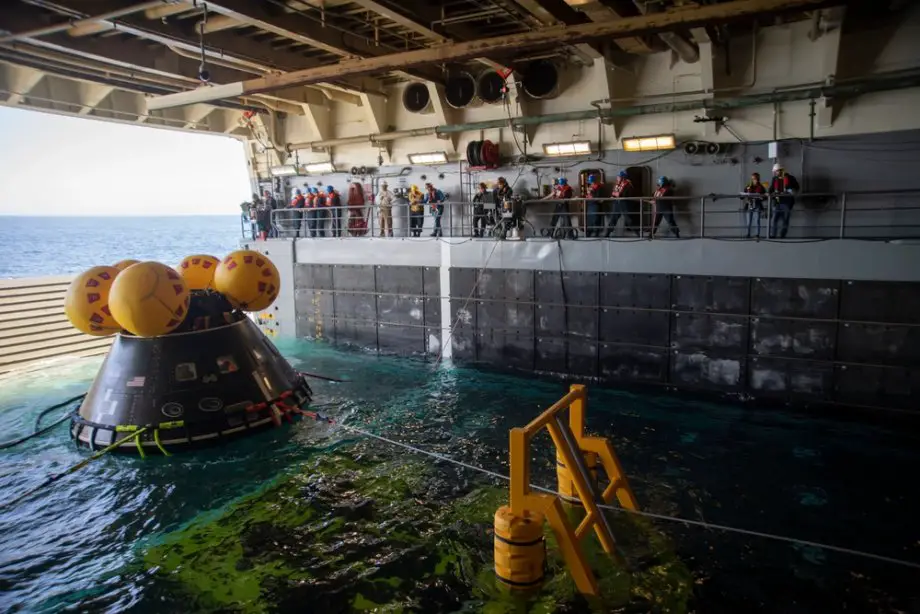Breaking news
San Antonio class LPD USS San Diego ready for recovering operations from lunar missions.
According to information published by the US DoD on February 22, 2024, sailors aboard the USS San Diego (LPD 22), a San Antonio-class amphibious transport dock ship, were seen meticulously stabilizing NASA’s Crew Module Test Article (CMTA) in preparation for its launch.
Follow Navy Recognition on Google News at this link
 NASA’s crew module test article (CMTA). (Picture source: US DoD)
NASA’s crew module test article (CMTA). (Picture source: US DoD)
This activity was part of the Underway Recovery Test 11, aimed at assessing the operations, procedures, and equipment necessary for the recovery of crewed space missions. The test is a component of the preparations for NASA's Artemis II mission, which plans to send four astronauts in the Orion spacecraft on a journey beyond the Moon.
This effort reflects the collaborative work between NASA and the Department of Defense to ensure the readiness and safety of crew recovery operations for lunar missions. The USS San Diego offers several capabilities relevant to these operations, such as helicopter embarkation, the launching and recovering of small boats, air search radar capabilities, and medical facilities.
NASA-US Navy
One notable collaboration involves NASA's use of the U.S. Navy's Kraken device, a sophisticated machine designed to simulate the disorienting effects of space on astronauts.
This partnership allows NASA scientists to study motion sickness and spatial disorientation, which astronauts may experience during space missions. The insights gained from the Kraken device not only help in preparing astronauts for space travel but also have potential applications in treating balance disorders on Earth.
Additionally, NASA and the U.S. Naval Research Laboratory (NRL) have partnered in the Airborne and Satellite Investigation of Asian Air Quality (ASIA-AQ) experiment. This international collaboration aims to improve the understanding of air quality in several Asian megacities by evaluating the factors controlling daily air quality variability.
The NRL provides critical weather forecasting for the experiment, which involves airborne measurements and satellite observations to study pollution sources and their impact on air quality. NASA contributes two research aircraft to this comprehensive study, which also relies on international collaboration with local scientists and environmental agencies.
Another significant joint effort is the preparation of NASA's Air Quality Monitor (AQM) for a sea trial aboard a U.S. Navy submarine. The AQM, initially developed for the International Space Station (ISS) to measure trace volatile organic compounds, is being adapted for use in the Navy's submarine fleet to monitor air quality.




























